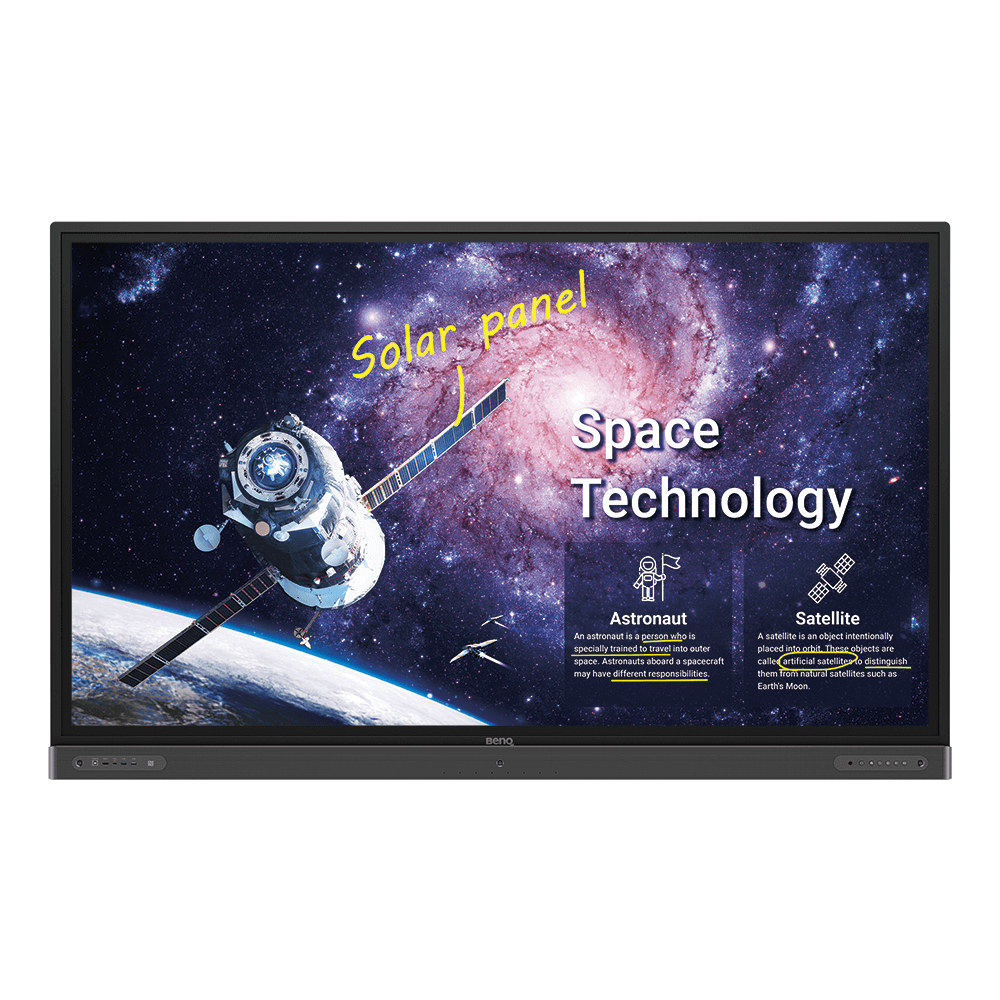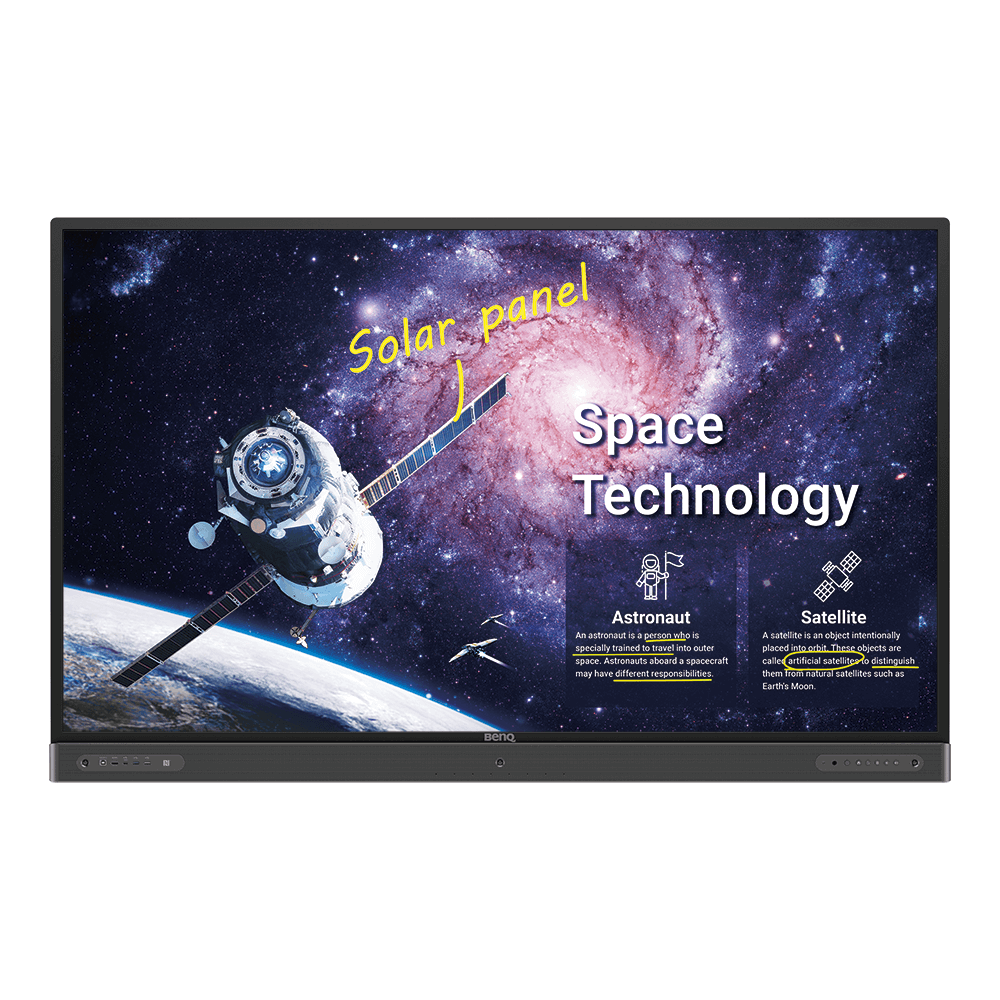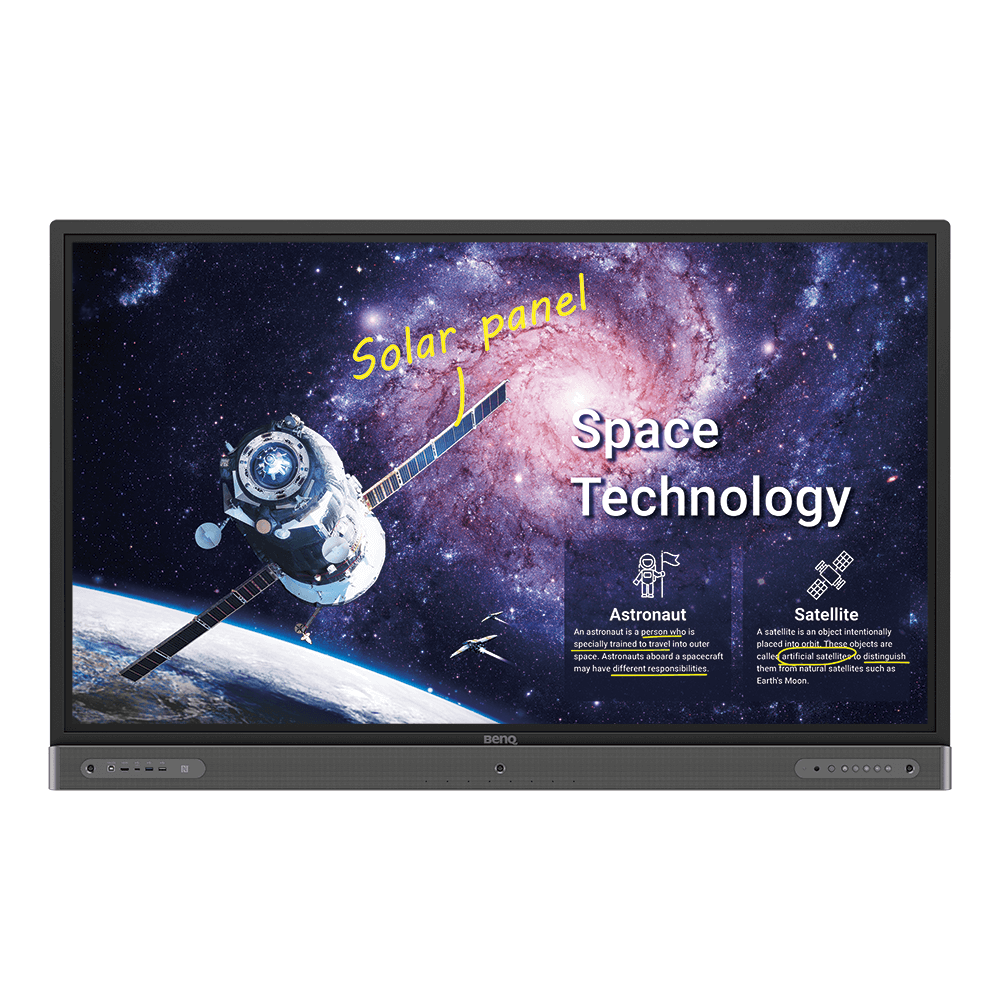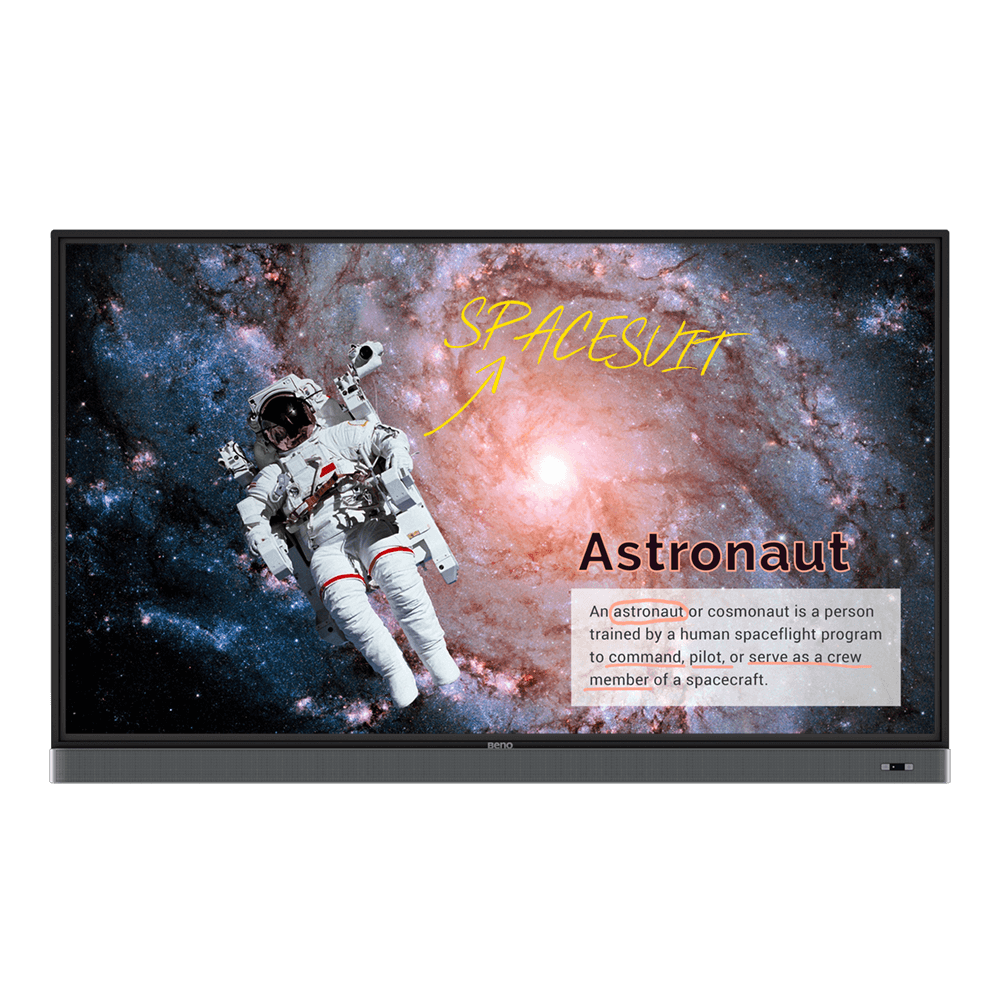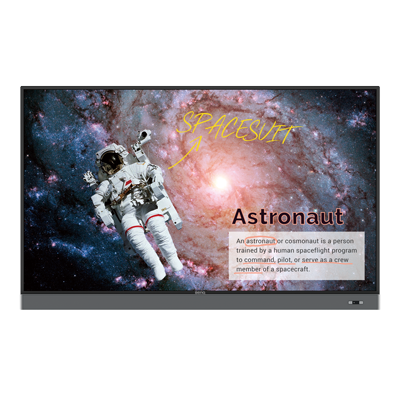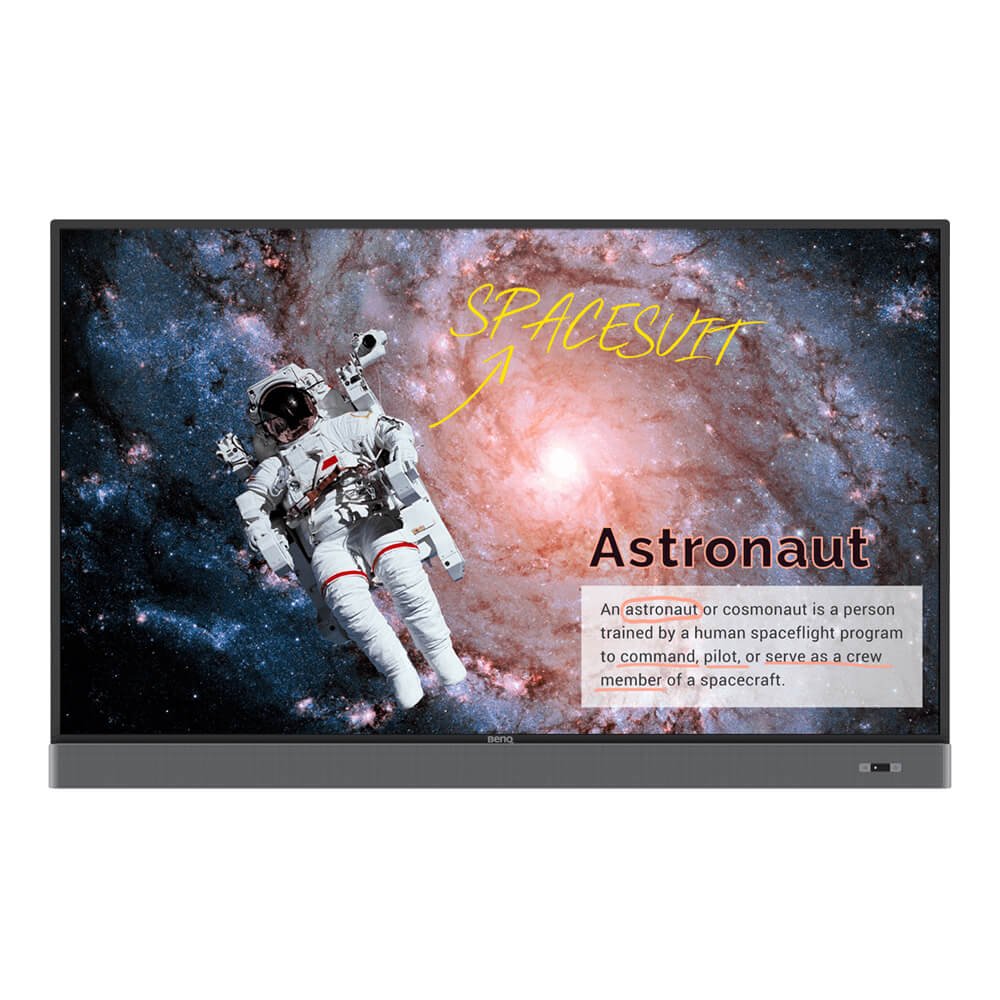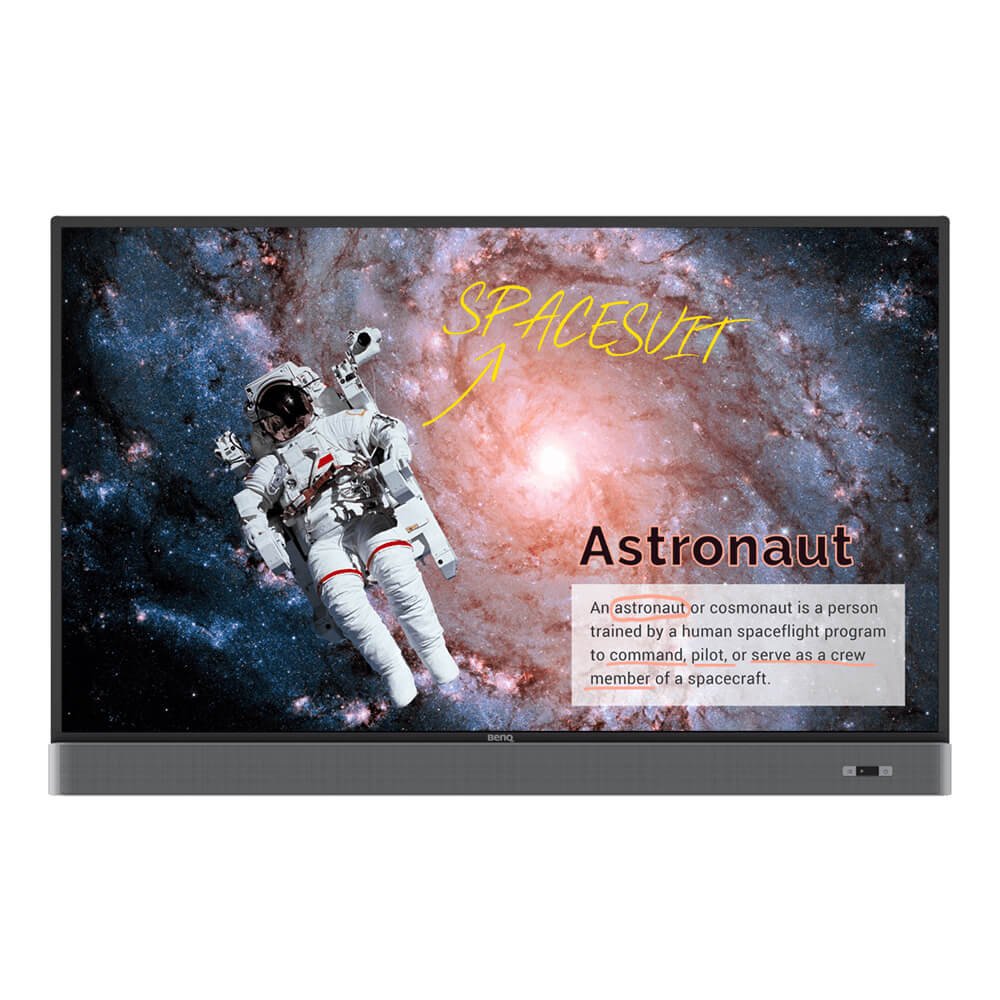Making your science class interesting and useful can awaken students' passion for science. Check these 8 examples of science class activities for BenQ board
7 Ideas for Fun STEM Class Activities with BenQ Boards
- Teacher Tips 'N Tricks
- Interactive Displays for Education
- 2022-01-19
Tech careers and technical skills form the future of the global employment landscape, of that there’s little doubt. Skilled people have always been in demand, but the specific abilities employers look for obviously change over time. One thing that remains a constant is that in-demand skilled workers have access to some of the best paid and most rewarding positions, and so encouraging your students to take an interest in technology as a vocation is a major plus.
We hear a lot of talk about automation and robotics, but the sober truth is that for the foreseeable future, robots are going to replace low-skilled positions on the more menial end of things. Skilled technicians and engineers will be required to design and maintain even the most advanced robots, and the same applies to AI. While it may be the case that eventually tech will be able to replace all human involvement, this is rather in the realm of science fiction and won’t happen for possibly a century, or three.
STEM classes offer great opportunities to prepare students for good future career prospects, especially in engineering, which is the fastest growing of the “STEM” constituents. Practice makes perfect applies big time to STEM education, as the entire concept is based on attaining skills rather than plain old theory. Thus, experimentation in-class and active engagement are pivotal to success.
Project-based learning and study through practical achievement (or learning by doing) form essential ways to ensure good STEM preparation and guiding your students towards better futures. All of these require a central digital and interactive platform to support them. You can’t have STEM without the T, after all, and that’s technology. BenQ interactive boards are once more here to help.
Here are 7 examples of fun, engaging STEM class activities that your students will love for BenQ interactive board.
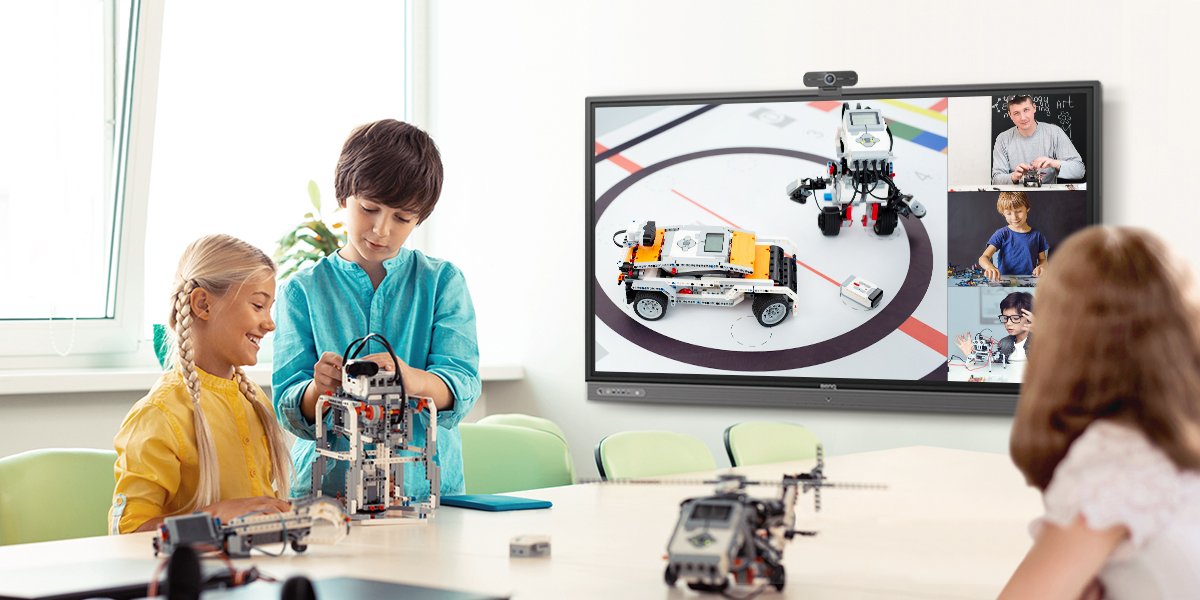
7 STEM Class Activities Examples for BenQ Interactive Displays
Form a Foundation of Knowledge
STEM education begins with the basics, like any other field of learning. But, there’s a big difference. Unlike social studies, for example, STEM must be put into practice from the very start. Background concepts aren’t exempt from this need for engagement, and theoretical book study won’t do. As won’t simple teacher-to-student, one way lectures. Engaging, interactive content works much better, in the form of videos, images, and game-like challenges.
BenQ smart boards arrive with the EZWrite suite, which is superb for free form writing, drawing, and all sorts of creative experimentation, right on the board or in collaboration with student devices as part of “bring your own device”.
Speaking of that, BenQ InstaShare allows for quick and simple screen mirroring, so students can work on their own devices and cast content to the main interactive board for the class to see and work on together. Similarly, you can mirror your laptop or tablet to the interactive board and bring up new materials to engage students with, minus the hassle of wires all over the place.
Put Theory into Practice
A staple of STEM classes is the group exercise that demands students work on a project together and apply engineering and science on an actual process in real life. Depending on the age and level of your students, there’s a lot you can do. There’s the marshmallow challenge, which is always good for a laugh and for demonstrating engineering concepts with nothing but some marshmallows and spaghetti. If you manage to keep things sanitary and neat, there may be a bonus cooking lesson in there, as well.
Other projects to consider are bridge building and constructing a simple battery-driven robot. LEGO comes in handy as so much can be done with the ubiquitous blocks. Students can learn about structures, the moving parts of engines, and various physics concepts, like weight distribution and gravitational interaction with everyday objects. You can display the project instructions on the board with large format, either by mirroring your computer screen via InstaShare, or directly finding the resources via your board's Firefox browser. LEGO has an entire site dedicated to education that you should check out. For additional project and science experiment ideas, we also recommend you take a close look at Funology.
Not Possible in Class? Simulate on the Big Screen!
Some projects or experiments may prove too complex or perhaps a tad risky for doing in-class and in real life. That’s where the power of big screen 4K interactive screens with high speed internet access proves so useful. You can find pretty much every science project or engineering feat in the form of videos and tutorials on the internet, whether from YouTube or a host of other sources.
With the high visibility and clarity offered by BenQ boards, plus the speaker array and its classroom-filling audio, you have the tools you need to demonstrate simulated experiments without compromising their impact. Whether directly on the board or mirrored from another device, like your laptop or tablet, you have a lot of freedom here and can choose from a virtually limitless resource pool.
Teach Through Play
Video games have evolved to cover every imaginable topic. Unlike the usual stereotype of games as just a hobby or even a waste of time, many titles are directly related to STEM learning and prove valuable partners in your quest to get the kids involved. True enough, games provide an almost airtight guarantee of engagement, meaning your students will be fawning rather than yawning.
Take the Kerbal Space Program series as an example. This popular and entertaining space agency simulator franchise has real science and engineering merit, as it’s very accurate and true to life (other than the goofy green aliens, maybe).
Minecraft needs no introduction, and of course offers the chance to build almost anything in a safe and fun way on-screen. For demonstrating engineering through the joy of building, this is an excellent tool.
When time comes to review knowledge using quizzes, choose the fun and interactive way with Kahoot! An official BenQ partner, Kahoot! provides a massive portal to a wealth of STEM quizzes, projects, and games.
Make Programming and Coding Relatable
Potentially some of the driest and most daunting topics, computer programming and coding become much more enjoyable and palatable through the magic of gamification. There are many tools and platforms you can choose from, and all run and look great on BenQ interactive boards.
Top of the list has to be Roblox, the very popular and versatile creative environment you must have heard about. Full of challenges and achievements to drive engagement, Roblox is designed for collaborative play and learning of nearly every topic, but it works especially well for grasping computer programming fundamentals. More advanced learners should be introduced to Codea and also Microsoft’s Kodu Game Lab. Still around after releasing over ten years ago, Kodu is a really fun way to get kids familiar with programming, and doubly so because it’s designed to make games.
Your students can then conveninetly share their results with all the class, directly from their device, thanks to InstaShare.
Get Kids Hooked with Spectacle
Put that gorgeous 4K screen to use and wow your students with the power of science, technology, and engineering. Here it really doesn’t hurt to go over the top, so topics like the tallest building, the biggest ship, or the largest machine always go over very well. Ever-popular is NASA footage from the international space station, and space in general. Mars videos are also made available by NASA, so do share with your class.
Fun facts and notable visionaries are also excellent ideas for STEM classes. Presentations and interviews with successful luminaries like Elon Musk and Jeff Bezos can help kids realize that investing in tech and science skills really could pay off in the long run!
Similar to the simulation of experiments we mentioned above, you can look for somewhat outrageous but enlightening science projects that others share online. There are many resources for that, and one of the best- HowStuffWorks.com is readily accessible via the browser on the BenQ boards thanks to internet connectivity.
Guest Speakers and First-Hand Insight
If possible, invite accomplished STEM professionals to speak in your class and engage with students. If they can do so in person, great, but with BenQ boards a virtual appearance via video call is just as good. This is a real treat and the real life experience provided could prove to be the influence that will shape the lives of your students for the better.
If you know anyone personally, that’s great. Or you could enlist school admin to help invite scientists, programmers, and even astronauts to share time with your students. Once more, the connectivity and excellent audiovisual experience provided by BenQ boards make these experiences very memorable and rewarding. Here are instructions on how to launch a video conference via your BenQ interactive display.
Interest is Everything
We can’t be good at something we’re not interested in, and we don’t get interested in something until we’re exposed to it. With the world in flux, STEM education isn’t just a luxury, it’s a great way to bolster the prospects of your students and prepare them for the future. And it is also a lot of fun!
Contrary to popular belief, science and engineering are very rewarding and even entertaining, so getting students involved can only be a good thing. The key is interest, and with BenQ boards, you’re delivering content that would otherwise be quite boring if confined to textbooks. Fortunately, BenQ interactive displays make STEM learning exciting, relatable, and much more effective.
Teacher Tips 'N Tricks
-
Trends & Knowledge
[Teacher Tips 'N Tricks] 8 Ideas for Fun Science Class Activities with BenQ Boards
2022.01.19 -
Trends & Knowledge
[Teacher Tips 'N Tricks] How to Prepare Your Students for Collaborative Future in Tech-Rich Classrooms?
Collaboration is a skill your students will need in the future. Now, thanks to BenQ boards, you have a chance to teach your students how to work in a project team!
2021.11.05 -
Trends & Knowledge
[Teacher Tips 'N Tricks] How to Prepare Your Students for Collaborative Future in Tech-Rich Classrooms?
Collaboration is a skill your students will need in the future. Now, thanks to BenQ boards, you have a chance to teach your students how to work in a project team!
2021.11.05

